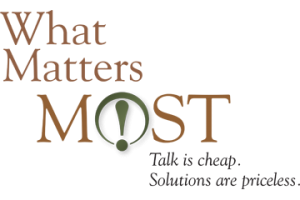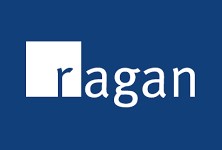Art Stewart, M.P.M.
July, 2010.
(Originally published in Ragan's 2010 Annual Guidebook to Crisis Communication.)
The fallout from the worst U.S. economic contraction since the 1930s, and its shock waves of instability for markets around the globe, has been exacerbated by a seemingly endless spectacle of breaches in leadership integrity, episodes of management incompetency, and breath-taking schemes of deception and outright fraud.
Just in 2010, we have experienced situations involving Toyota, BP (along with the EPA), Goldman Sachs, Massey Energy (the company involved in the West Virginia mining disaster) and the U.S. Minerals Management Service to Tiger Woods, Congressman Eric Massa, Family Research Council co-founder George Rekers, along with the Pope and the European Catholic Church. What communicators have historically understood to constitute a “crisis” has been dramatically redefined overnight.
 Running parallel to recent events has been the decade or longer evolution of corporate and social responsibility practice that has resulted in both a blessing and a curse for senior executive leaders. Many well-intentioned organizations are now wrestling with the challenge of improving alignment of their business practices with heightened stakeholder expectations for accountability, transparency, leadership integrity, and business competency. Only now they are bumping up against relentless scrutiny from increasingly resourceful and sophisticated watchdog groups, politically-hyper regulators, and the DIY online citizen media.
Running parallel to recent events has been the decade or longer evolution of corporate and social responsibility practice that has resulted in both a blessing and a curse for senior executive leaders. Many well-intentioned organizations are now wrestling with the challenge of improving alignment of their business practices with heightened stakeholder expectations for accountability, transparency, leadership integrity, and business competency. Only now they are bumping up against relentless scrutiny from increasingly resourceful and sophisticated watchdog groups, politically-hyper regulators, and the DIY online citizen media.
There is a resolutely punitive mindset on the part of the American consumer and the public at large. Now organizations may come under threat from the most unassuming act or gesture that ends up displeasing some faction and, suddenly, an ‘incident’ careens out of control and becomes a crisis.
The irony is most business crises today are not the result of extreme events, such as fires or natural disasters, but the way a company or one of its supply chain partners conducts themselves. These unassuming acts are usually predictable and had early warning signs, sometimes months or years ahead of the flash point. But warnings can go unheeded. Or, as the Shirley Sherrod/Andrew Breitbart episode illustrated, opposition forces seek to manipulate perception by depicting behavior out of context in service of a predetermined agenda, producing the trigger point for a knee-jerk response.
Organizations may also be inhibited by a poor flow of information, a lack of external visibility and participation in the resolution of issues, an inability to network key stakeholders who are more than a degree of separation, or a passive management of risk that invites escalation rather than supports mitigation.
 As a result, many public figures as well as organizations continue to experience erratic, wide spikes, or extreme ups and downs in public trust and confidence. In an age in which news not only travels in an instant but is just as quickly misinterpreted - and intentions misconstrued - one version of a story can be simultaneously accepted as the truth by customers, the media, and the public.
As a result, many public figures as well as organizations continue to experience erratic, wide spikes, or extreme ups and downs in public trust and confidence. In an age in which news not only travels in an instant but is just as quickly misinterpreted - and intentions misconstrued - one version of a story can be simultaneously accepted as the truth by customers, the media, and the public.
The fear factor among C-suite leaders and boards for stakeholder accountability is now on par with that for regulatory and legal impositions. They have learned that one abiding aspect of scandal is its indiscriminate nature: No matter where bad behavior resides, scandal will find it.
The new era of prolonged testing, learning, and adapting
What may have been less obvious amidst the firestorm of controversy and upheaval is the shift taking place with many instruments of our government, culture, economic and political systems. Evidence abounds of fundamental changes taking place in their character and purpose, authority, impact, and connectivity.
Many leaders are operating in an ad hoc environment of shrinking lifecycles where they barely resolve one challenge before another pops up. Maintaining a cohesive purpose and community becomes secondary to having to constantly re-orientate and re-configure within a context that is perpetually changing. A reset operational landscape is disrupting the once-familiar market fundamentals that have historically formed our frame of reference.
 We have entered a changed game of crisis management and communication with new rules of engagement and more demanding terms of endearment for companies seeking to be good while doing well: Sustaining revenue growth, growing market share, and achieving respectable profitability - all while maintaining a reputation as an exemplary corporate citizen - has never been more difficult or more critical. Corporate responsibility practices now must be integrated with risk reduction and mitigation strategies that leverage resources to avert crisis in the first place.
We have entered a changed game of crisis management and communication with new rules of engagement and more demanding terms of endearment for companies seeking to be good while doing well: Sustaining revenue growth, growing market share, and achieving respectable profitability - all while maintaining a reputation as an exemplary corporate citizen - has never been more difficult or more critical. Corporate responsibility practices now must be integrated with risk reduction and mitigation strategies that leverage resources to avert crisis in the first place.
Responsible corporate behavior engenders a less crisis-prone business culture
Reducing the potential of an incident or occurrence imploding into a crisis isn’t so easy. The current transition from a shareholder to a stakeholder-driven society is helping to reshape business models and practices, transforming how crisis and corporate responsibility teams configure for a different external context.
Organization designs increasingly integrate interdependent units defined more by strategic objectives than jurisdictional or functional domains. These new operational orientations invite the social values of a company and its stakeholders to become more central to what drives business performance and value delivery. For example: By implementing a corporate code of ethical behavior and a platform of stakeholder issue priorities tied to a brand’s essence, internal teams become more cognizant on a daily basis of how every touch point in the customer lifecycle is an opportunity for two-way communication.
These new operational orientations invite the social values of a company and its stakeholders to become more central to what drives business performance and value delivery. For example: By implementing a corporate code of ethical behavior and a platform of stakeholder issue priorities tied to a brand’s essence, internal teams become more cognizant on a daily basis of how every touch point in the customer lifecycle is an opportunity for two-way communication.
Six key trends for navigating corporate responsibility in a crisis
A number of factors are guiding how crisis management and communication will effectively support the integrity of corporate responsibility practice into the future. Here are a few guideposts:
1. Risk reduction and mitigation strategies should be viewed in terms of asset classes.
Reducing the hazards of everyday risk in business requires managing within classifications of assets, such as:
- Human assets - such as intellectual property and the capacity for innovation held by individual personnel
- Knowledge assets - the collective body of intelligence represented in legacy products, services, best practices and systems
- Brand assets - the literal equity that comprises a brand’s valuation; Financial assets - including community investments and strategic partnerships
- Political assets - such as influential relationships and industry leadership; and Reputational assets - the well of good will and consensus of support for your business agenda
2. External communication initiatives should be treated as a systematic pattern of engagement.
Today it’s all about around the clock interactive conversation and crowd sourcing within a systematic lifecycle of duration, frequency, consistency, form, intentionality, continuity, agency, and breadth.
3. The extent to which an organization assumes a ‘public responsibility’ appropriate to their context determines whether corporate responsibility practices either facilitate or inhibit corporate progress.
There are hard choices that come with public ‘activism’ on behalf of the specific issues that shape the social context of a business. Companies will improve business value if their economic, social, and environmental impacts are managed beyond philanthropy, obligation, or compliance to stress a focus on intentions, articulations, actions, and continuous fulfillment of stakeholder expectations.
4. Liabilities are hidden opportunities awaiting the right approach.
Companies which treat the unavoidable liabilities of competitive business dynamics less as aberrations, and more as hidden guideposts to opportunity, become more effective in the deployment of resources and leveraging of assets; enhance organizational performance and in-field functionality; develop a more robust intervention strategy; achieve better alignment with stakeholder expectations; and enhance their ability to create meaningful change.
5. Building organization durability from sustainable value creation is the way out of reflexive, incremental management.
Divesting of old, self limiting management mindsets remains a challenge. Many leaders want out of the trap of obsessing over today’s earnings at the expense of tomorrow’s sustainable viability. However, embracing new notions of what constitutes business success has been hampered by the need to measure immediate term results at any cost.
6. Plausible denial is not a viable strategy.
It’s time to get less reactionary, impulsive, and defensive. As corporations are held to an increasingly higher standard regarding their values, mission, business strategy, and community commitments, their leaders are being required to keep vigilant watch over sales data, business metrics and customer service, competitive intelligence, consumer research, and opinion leader activities. It simply isn’t credible to claim it’s all beyond your pay grade.
Ultimately, dismissing good citizenship practices as ancillary to reducing competitive liabilities, building brand equity, enabling innovative R&D, enhancing customer loyalty, and advancing market leadership blinds companies to the implicit social contract they hold with constituent communities. Such dismissal results in bad decisions and outcomes that could have been avoided. Shareholders always want a good return on their investment with strong valuation and upside stock potential but they also increasingly want alignment with their core values. SIP

